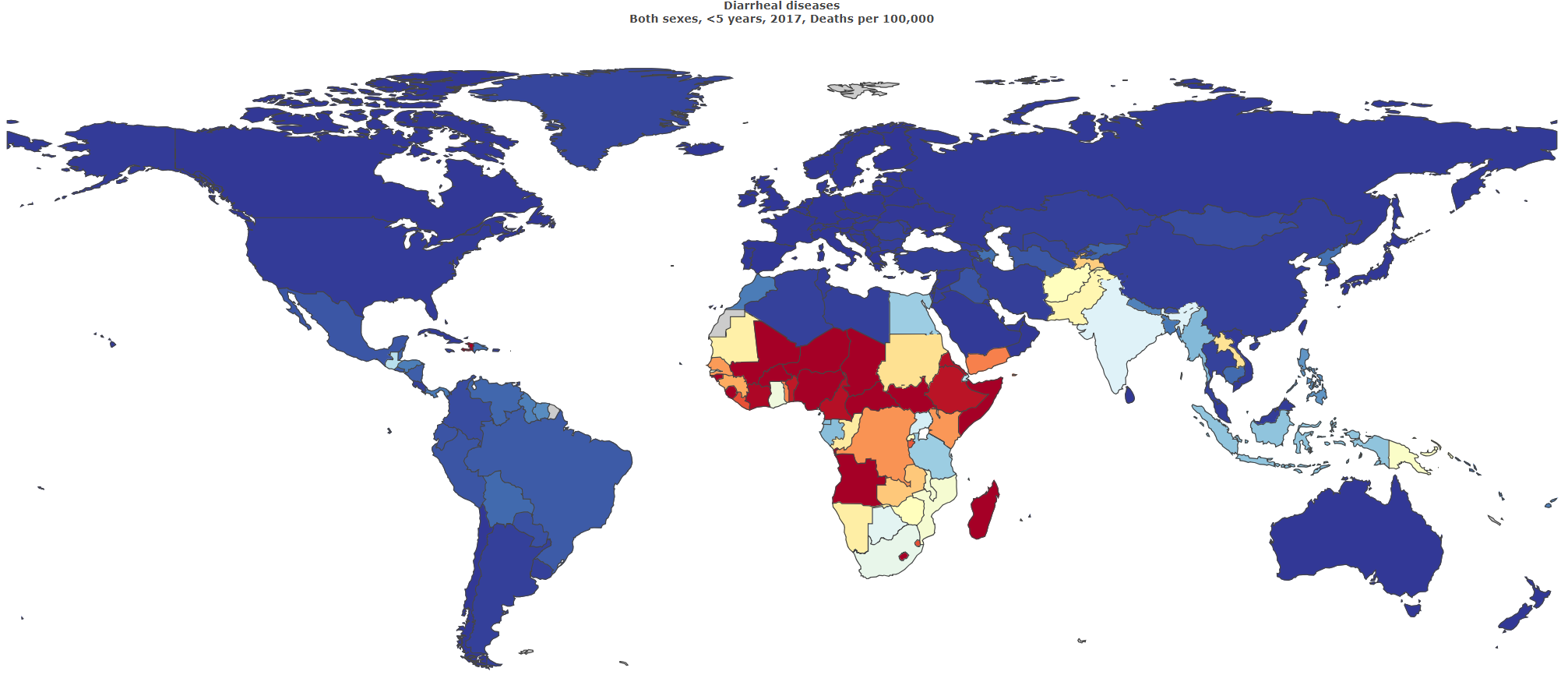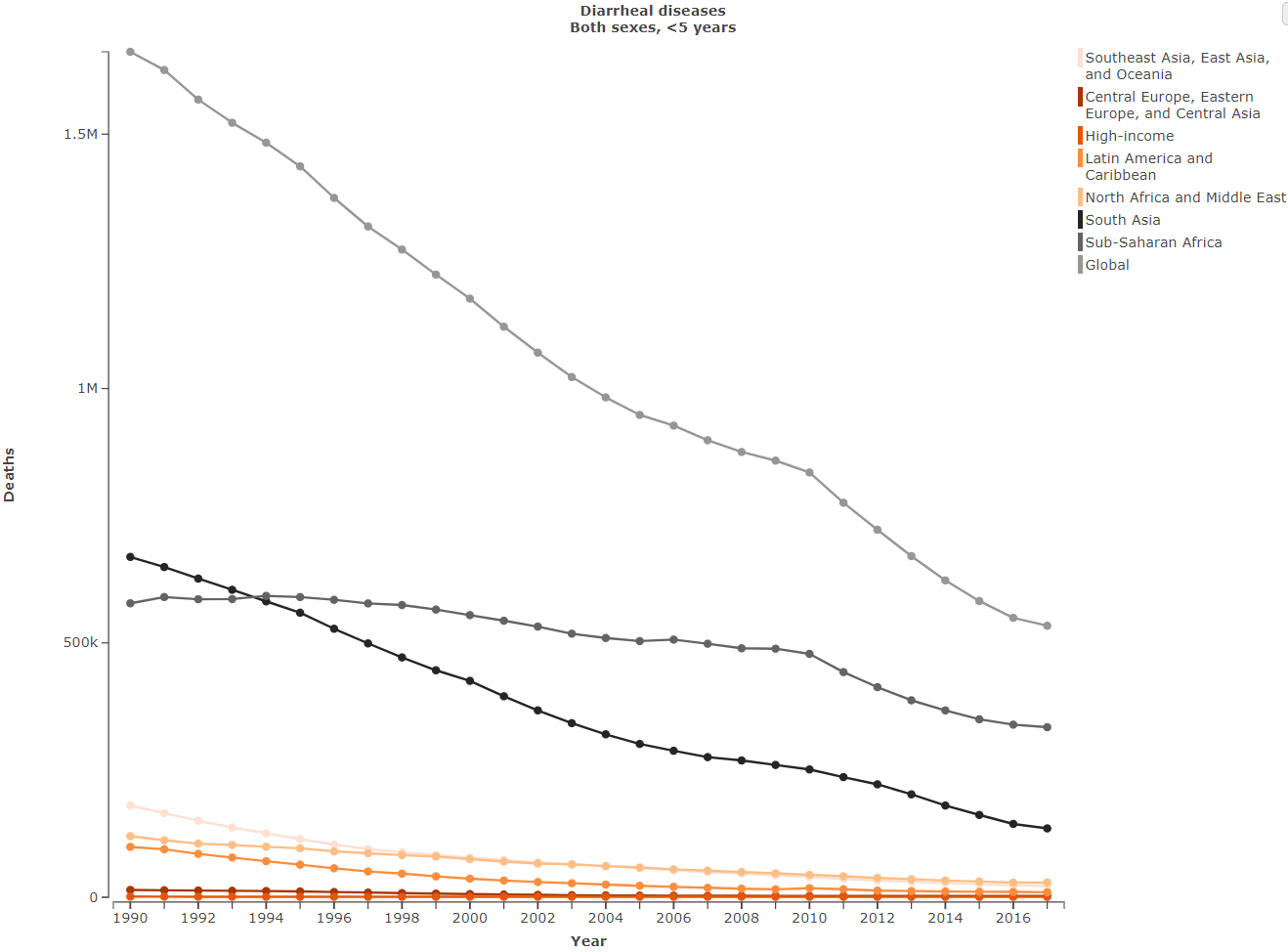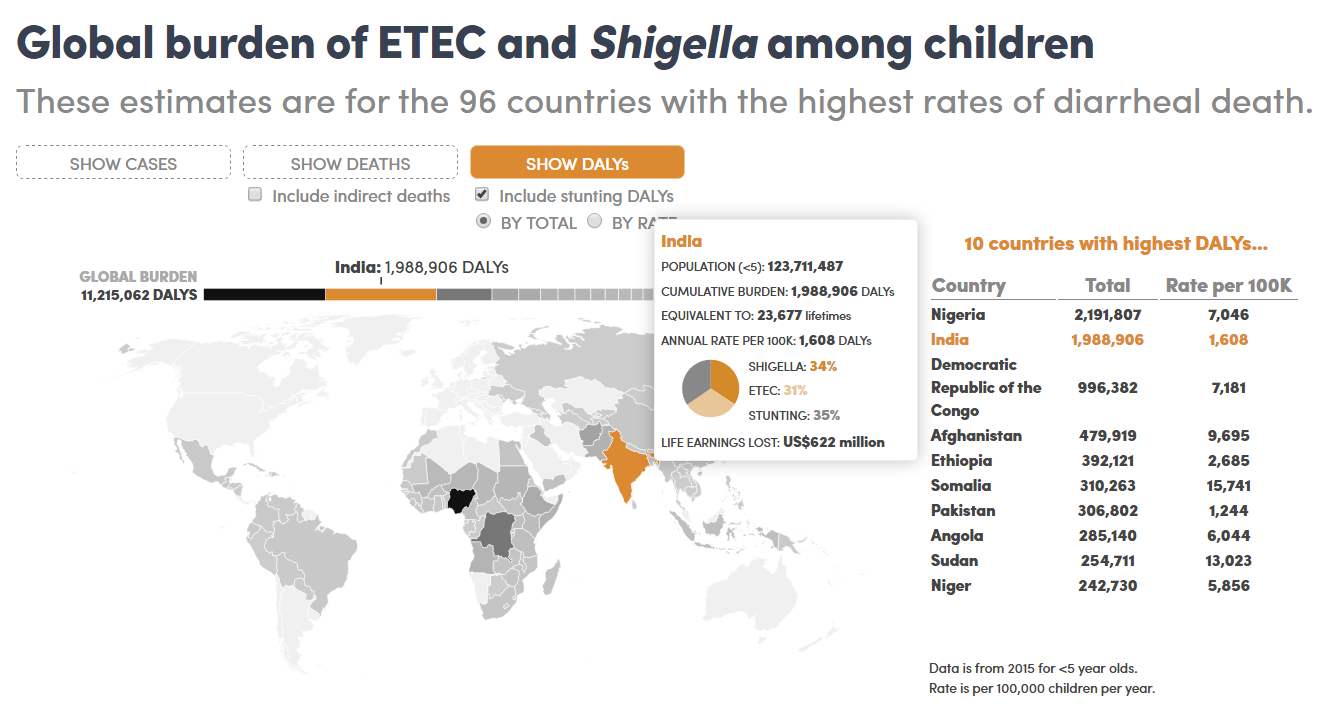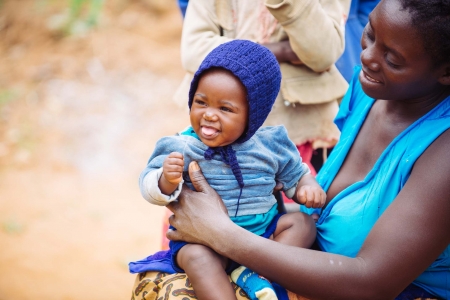Understanding the burden of diarrhea
|

Everyone deserves to live a long life in full health. That may not seem like such a radical thing to say, but in many ways, it is helping to spark a global health revolution.
Inspired and fueled by this idea, the Global Burden of Disease study, or GBD, seeks to answer the question of what sickens and kills people of all ages around the world. So, for example, are more people getting sick, or even dying, due to heart attacks, or diarrhea? And is that because of increased smoking or unsafe sanitation, respectively? How much healthy time is being lost to low back pain? To depression? Or how many years are lost when people die early from pneumonia or traffic accidents? And are these numbers changing over time?
Diarrhea is one of the more than 450 diseases, injuries, and risk factors that GBD looks at. The largest and most comprehensive effort to measure health across places and over time, GBD draws on over 100,000 data sources and works with over 3,500 collaborators in more than 145 countries and territories. The ongoing study produces annual estimates of what is causing loss of healthy years, due either to early death or to disease that lowers quality of life, around the world. Housed at the Institute for Health Metrics and Evaluation (IHME), the results (as well as some fascinating data visualization tools) are open to and used by governments and partners across the globe.

The size, complexity, and frequency of the study have grown exponentially since the first iteration in 1993, with updates released annually and the list of diseases, risks, territories, and everything in between evolving with each new cycle. GBD 2017 (released in December 2018), estimated results for nearly 200 countries and nearly 600 local levels (such as states or provinces).
So what?
Before GBD, it was only possible to examine snapshots of health at fixed points in time – often snapshots taken many years or decades apart and from different sources. GBD now shows how health is changing, not just decade by decade but year to year. For example, the number of children dying of diarrhea and lower respiratory infections has decreased dramatically over the lifetime of the study, and we know that much of this is attributable to a decrease in unsafe water and child malnutrition.

Those figures represent not just lines on a graph, but millions of lives lived longer and more healthfully. This information on where there is improvement – and where there are still great or even rising needs – is powerful in the right hands. Governments and health stakeholders around the world are using GBD estimates to identify the greatest needs and opportunities for impact. After all, you cannot create effective, fair, or cost-effective public health strategies unless you understand exactly what health challenges exist in your community.
In light of this, in May 2018, the World Health Organization (WHO) and IHME formally agreed to collaborate on improving the accuracy, timeliness, and policy relevance of health data. On diarrhea specifically, IHME and WHO are working to better understand each other’s methods as a first step toward the goal of strengthening GBD estimates.
Today, GBD results and tools are being used to estimate pathogen-specific incidence of diarrhea at several pediatric diarrhea surveillance sites. Advocates are using GBD estimates on the impact of rotavirus vaccine as evidence for the need to expand the use of the vaccine and its introduction in additional countries.
The GBD is a complex enterprise, using several different statistical modeling methods to illuminate – and anticipate – global health trends. In this blog series, we will explore these components, with an emphasis on diarrhea, with the intention of making the GBD more approachable and engaging for health and diarrheal disease advocates.
We hope that you join us.
Interested in learning more? This post draws from our Acting on Data blog and the work of IHME.












